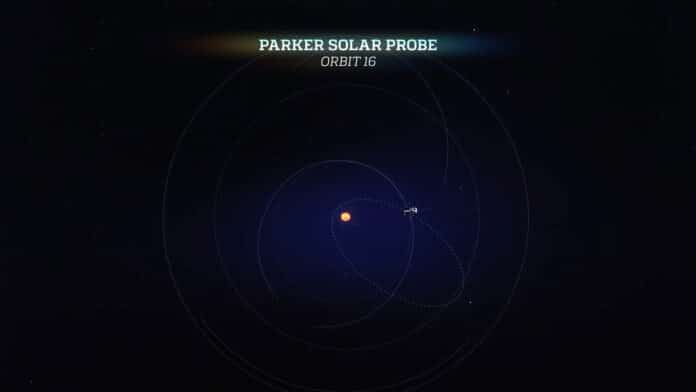While moving at 364,610 miles per hour, NASA‘s Parker Solar Probe came within 5.3 million miles of the solar surface on June 22, 2023 – marking a close approach to the Sun (known as perihelion). On June 27, 2023, the probe accomplished a milestone- it Completed the 16th Close Approach to the Sun.
The mission team at the Johns Hopkins Applied Physics Laboratory (APL) in Laurel, Maryland, noted the close approach was preceded by a small trajectory correction maneuver (TCM) on June 7.
The probe has another exciting feat coming up on Aug 21. On Aug. 21, 2023, Parker Solar Probe will swing past Venus for its sixth flyby of the planet. This flyby will be the sixth of seven planned flybys of Venus during Parker’s primary mission. Parker uses Venus’ gravity to tighten its orbit around the Sun and set up a future perihelion at just 4.5 million miles from the Sun’s surface.
Nour Raouafi, Parker Solar Probe project scientist at APL, said, “Parker has already taught us so much, allowing us to investigate the source of the solar wind and discover more about the magnetic activity within the corona. We’re excited to see what else this mission has to show us as Parker gets even closer to an increasingly more active Sun.”
